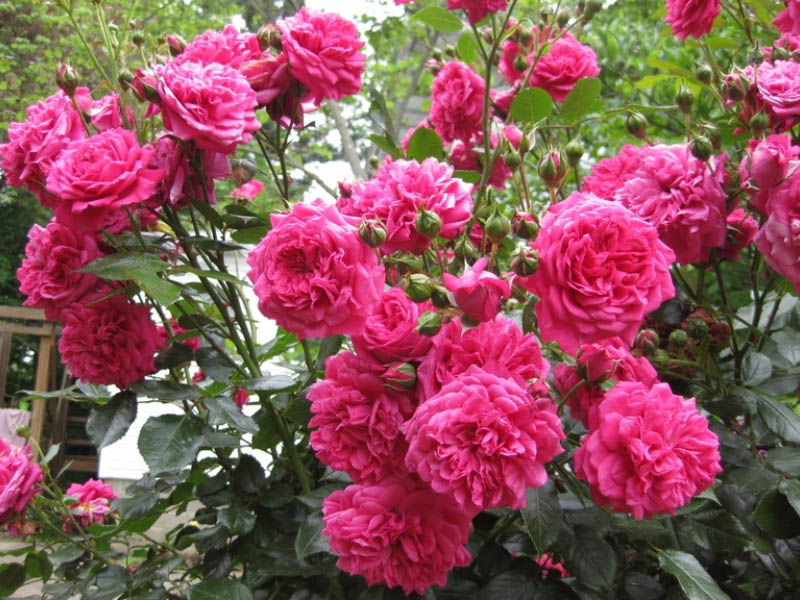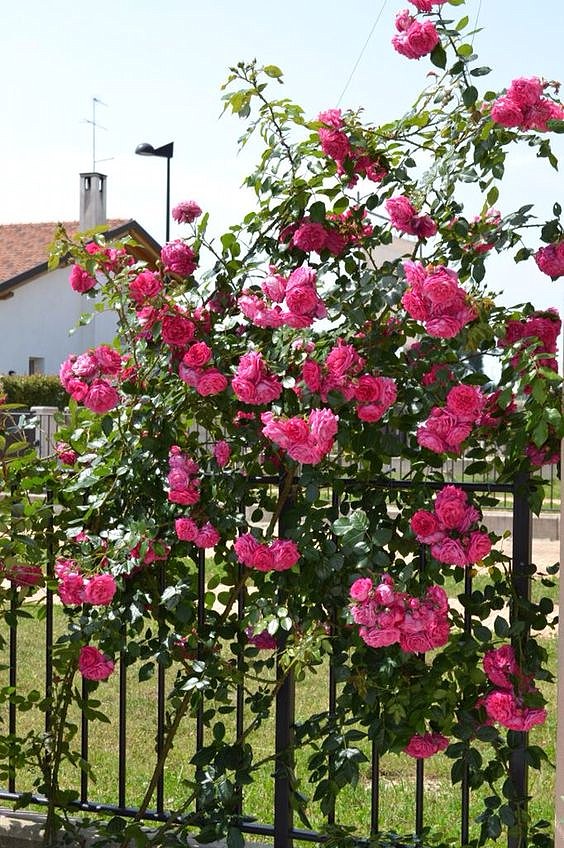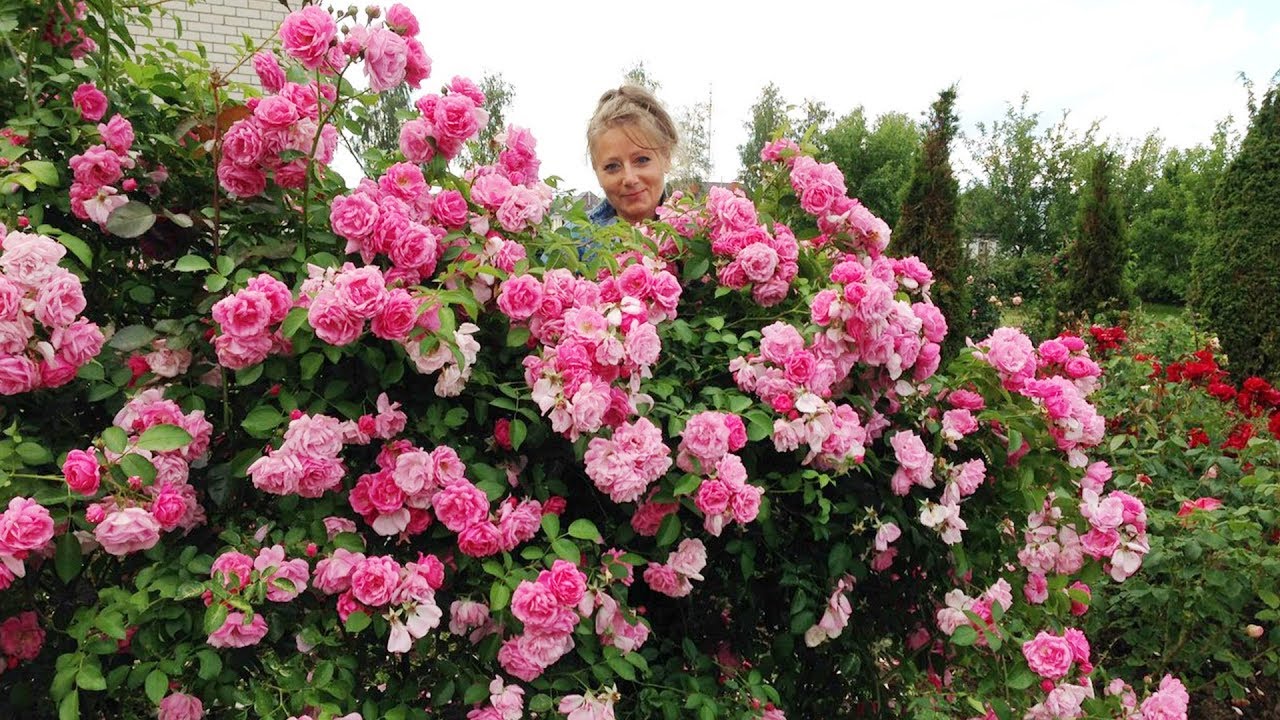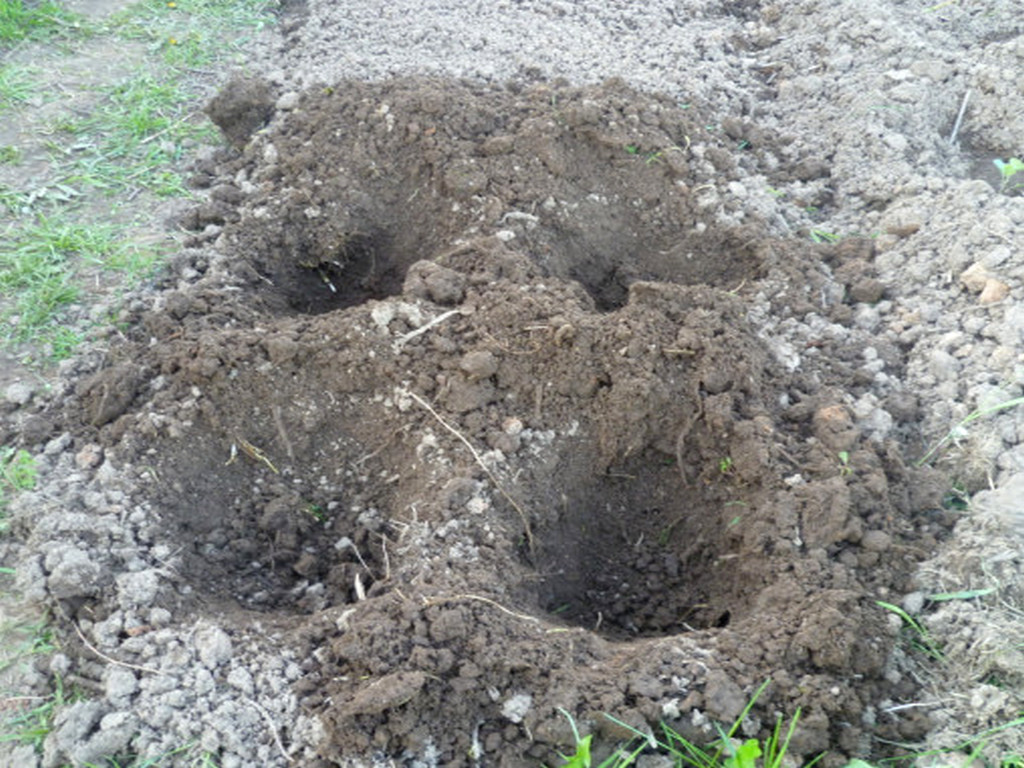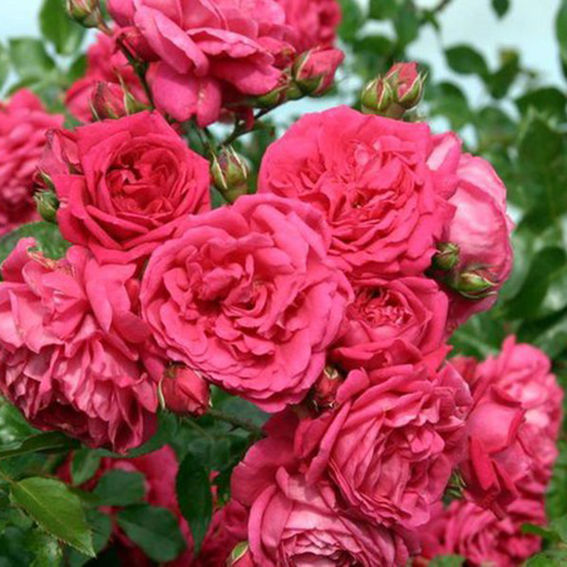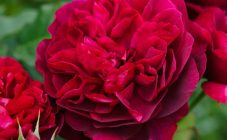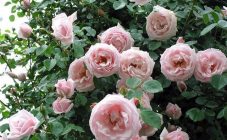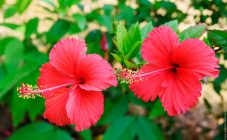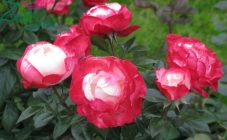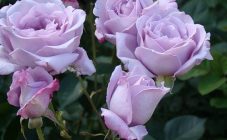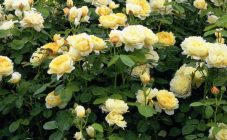Content:
When decorating their garden or vegetable garden, many gardeners pay attention to climbing roses. Rose Laguna, as a representative of this variety, has a long flowering and pleasant aroma. These parameters were achieved through the long-term selection work of the German company "Wilgem Corder and Sons". The variety was introduced to the public in 2004.
Description of the variety
Rose Laguna belongs to the sub-species of semi-climbing roses of Climbrers. These plants are characterized by straight, thickened shoots. Climber sits well against straight supports, for example, along a fence, wall or gazebo.
The lagoon has a wonderful fruity aroma. The flowers are painted in bright pink shades and have thick double petals. One cluster has 6 to 8 flowers. The bush can reach a height of 2-2.5 meters, in width it grows up to 1 meter. Leaves of a dark green shade with shine, densely arranged.
Blue Lagoon rose is suitable for cultivation in some northwestern regions of Russia and on the Crimean peninsula. Possesses low winter hardiness.
The plant is resistant to powdery mildew and black spot.
Agricultural technology of cultivation
Landing
For planting roses, choose light areas without high groundwater and drafts. Light nutritious soil is suitable for the plant.
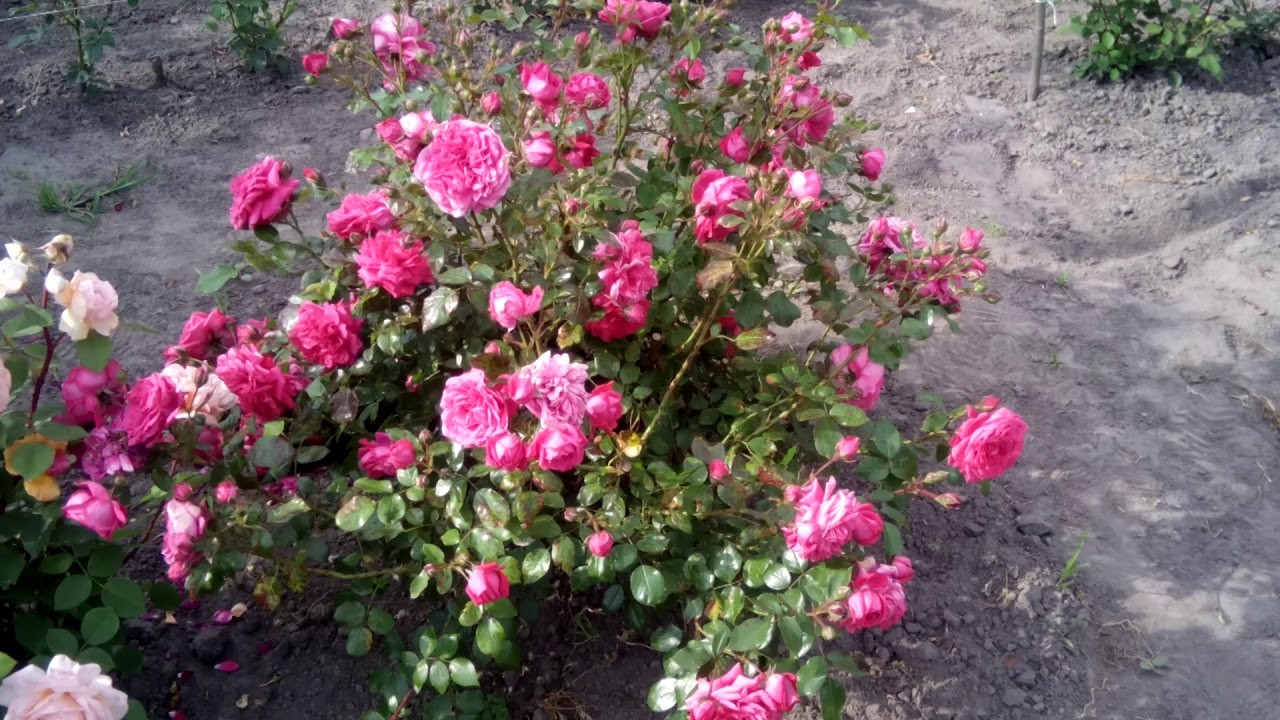
For planting, you can independently prepare the soil with a full set of necessary micro and macro elements
For planting, you can independently prepare the soil with a full set of necessary micro and macro elements. For such soil, connect:
- 10 kg of fertile garden soil.
- 5 kg of peat.
- 400 g of wood ash and mineral fertilizer.
- 10 kg of sand.
The rose is planted sequentially in several steps:
- The prepared soil is watered and allowed to completely absorb moisture.
- The seedling is placed vertically, spreading the roots along the entire recess.
- When sprinkling the seedling with soil, it is important not to cover the lower buds.
- The bush should be shortened to 20 - 25 cm.
- A support should be placed near the planted plant.
Watering
The optimal frequency of watering in the first year of a plant's life is once every 5 days. Subsequently, watering can be reduced to 1 time in 10 days. This characterizes the resistance of the Laguna rose to drought. It is not recommended to completely dry the soil under the plant. For irrigation use settled water. The procedure is carried out in the morning or evening hours.
Top dressing
When planting a seedling, organic fertilizers are applied to the hole. With the onset of the growing season, the plant is fed with nitrogen fertilizers, in the middle of the period, potassium-phosphorus compositions are introduced, after the end of the period, the plant is fertilized with potassium substances.
Pruning
Pruning is an important cultivation technique for the Laguna lagoon rose.The event is held 2 times a year: in spring and autumn.
Spring pruning is necessary to remove diseased parts of the stems that have not survived the winter. It also prevents large branching of the plant, allows you to form a beautiful bush of the desired shape. To form a bush, no more than 3 buds are left on the side arrows.
Autumn pruning helps prepare the plant for the winter period. To do this, the stems are shortened by a third of the length so that the rose can be hidden from the cold, and three-year branches are removed so that the quality of flowering does not decrease.
Transfer
The best time for a transplant is before the kidneys form. For the procedure, the stems are untied from the support, and the plant is dug in at a distance of 50 cm from the base. Then the rose is removed from the ground and the roots are shaken off. For planting, a pit of the same diameter is prepared, on the bottom of which a drainage layer and a layer of nutrient soil are laid. By lowering the seedling into the ground, the roots are spread. Then the soil is tamped a little.
Reproduction
To propagate the Laguna rose, 2 methods are used: seeds and seedlings. The most popular among gardeners is the method of propagation by seedlings.
Tips for propagating climbing roses:
- For cuttings, branches are used that have already faded.
- On the future seedling, the presence of a pair of internodes is checked and a cut is made under the kidney at an angle of 45 degrees.
- The leaves on the cutting are removed completely from below, and cut in half from above.
- The top cut should be away from the kidney.
- For planting, a mixture of soil and sand is used.
- The planting depth of the seedling should be no more than 2 cm.
- From above, the plant should be covered with a glass container and placed in a lighted place.
- It is important to observe the frequency of watering the seedling in order to prevent it from drying out.
- The plant is protected from direct sunlight.
Tying a rose
There are several ways to tie a plant:
- To make the rose resemble a blooming cloud, the main shoots are attached horizontally to the support.
- With a fan-shaped arrangement of the shoots, the lateral branches are left free.
- When tying a stem to an arch or arbor, the stems are directed in a spiral around the support.
Pests and diseases of the Blue Lagoon rose
The most dangerous pests for roses are spider mites and aphids. The spider mite is located on the inside of the leaf, which is braided with a thin web. This leads to yellowing of the leaves, their further drying out and death. Insecticides are used to control the tick. Aphids feed on plant sap, which they suck from leaves, stems and buds. Fufanon, Actellik preparations will help to fight aphids.
Advantages and disadvantages of the variety
Among the advantages of the Lagoon, there is a wonderful aroma, a long flowering period, and unpretentious care. The disadvantages are instability in front of aphids and spider mites, the need to shelter the plant for the winter, protection from drafts and direct sunlight.
Recommendations of experienced gardeners for the care of the Lagoon:
- When several bushes are planted closely, an interval of at least 1.5 meters is made between them, because the bushes are quite tall.
- When preparing for wintering, the rose should be bent to the ground, having previously cut it to 50 cm. For a full-fledged shelter, there should be free space around the bush.
- When planting, do not choose the northern sides of fences or walls so that the plant receives enough light.
- Rose stems can support their weight, but they are fanned for convenience and bush formation.Most of all, young stems need a garter.
- The plant is not whimsical to growing conditions, but on poor soils it will not bring abundant flowering and large growth.
Climbing rose Lagoon is very popular with gardeners. Blooms throughout the summer, thereby decorating fences, arches and gazebos. It pleases with its bright colors and unique aroma.
